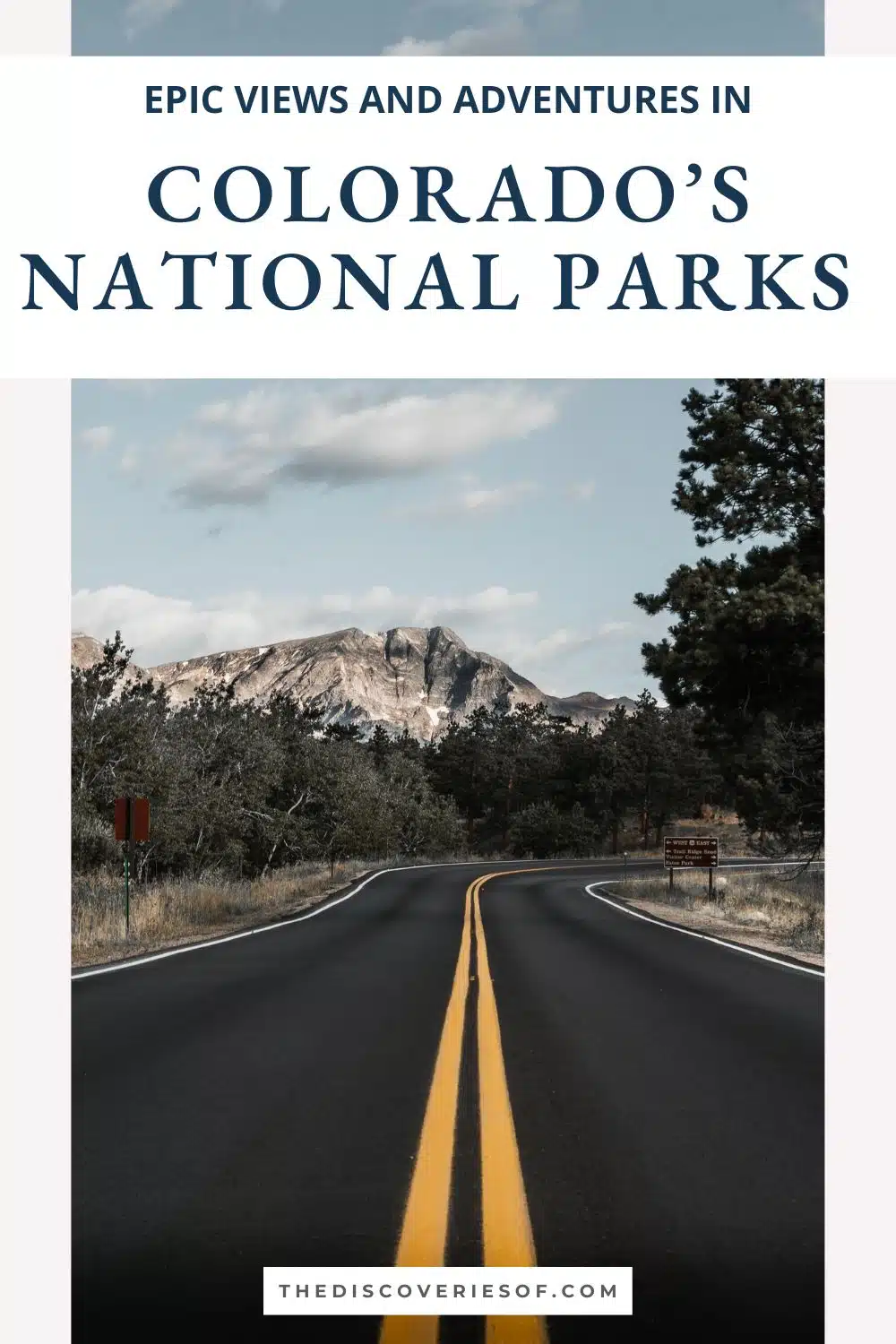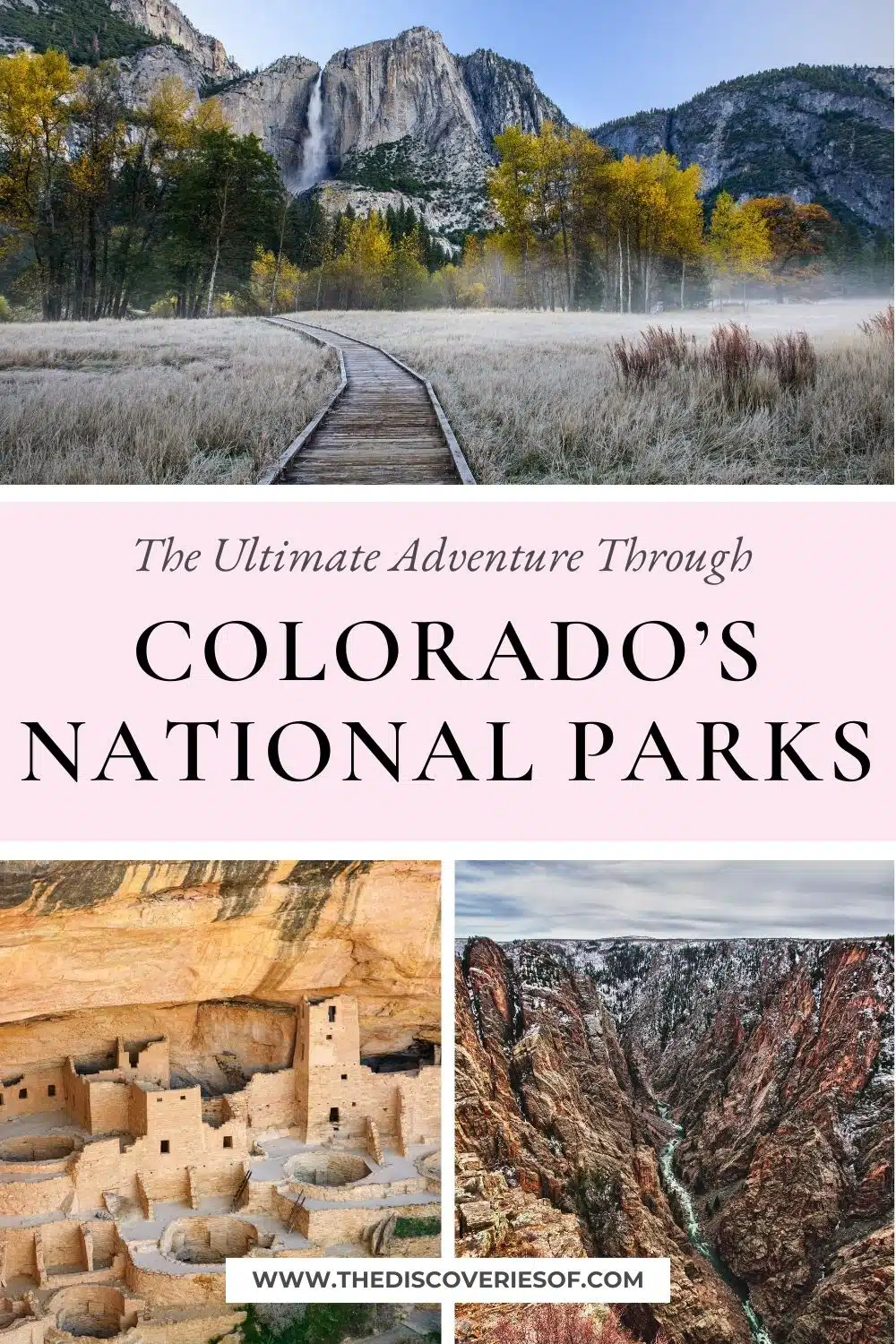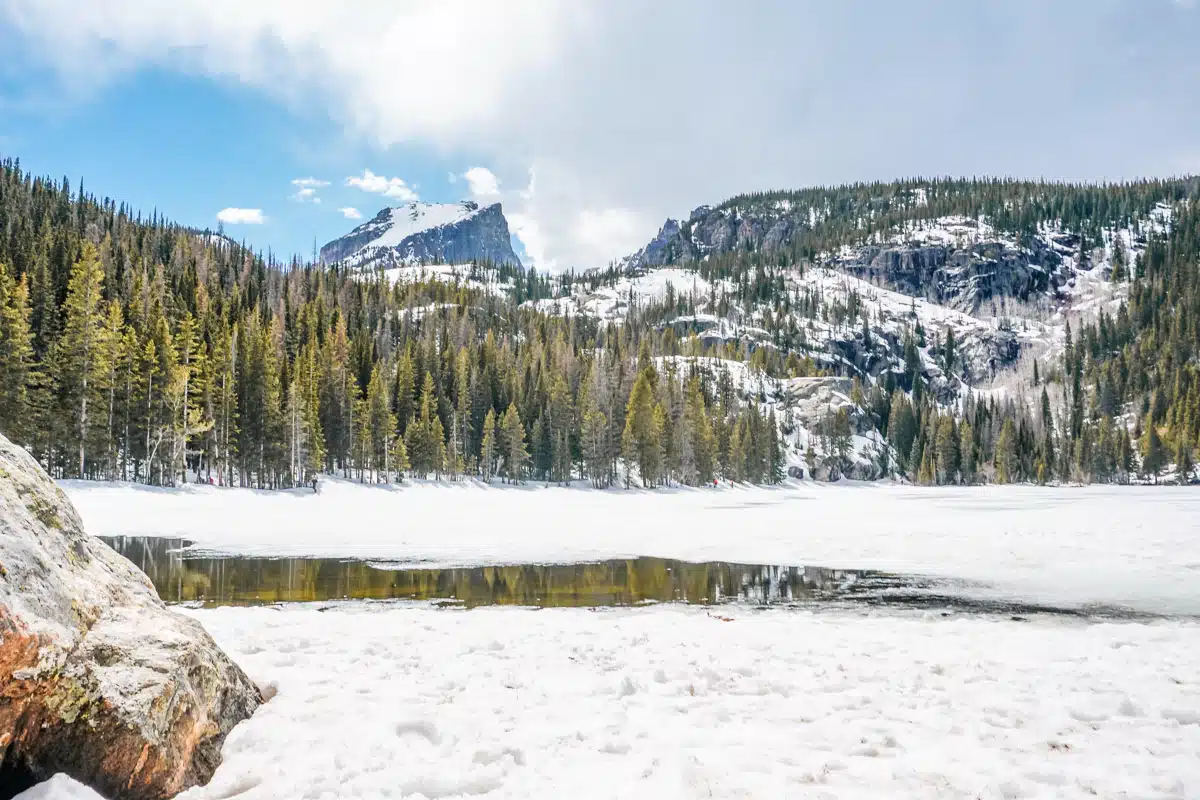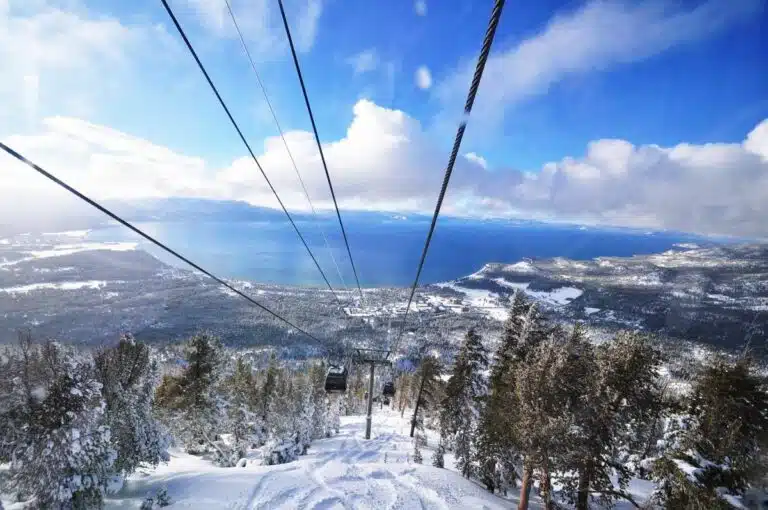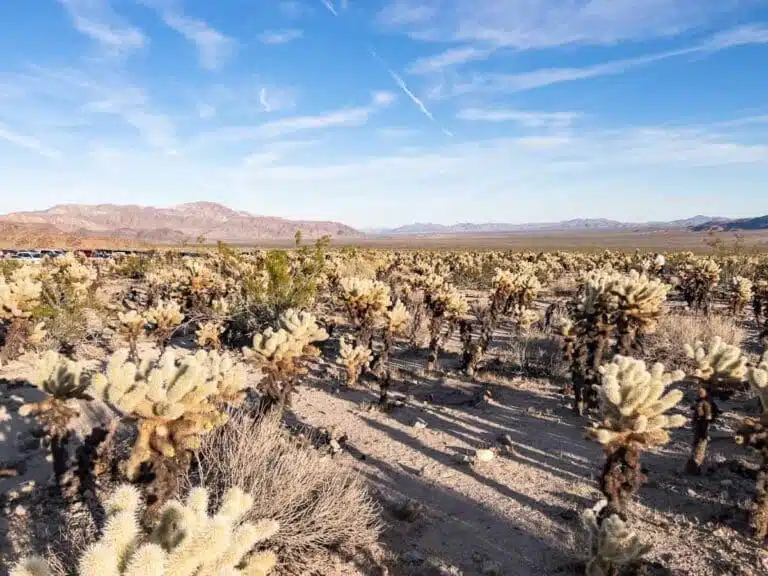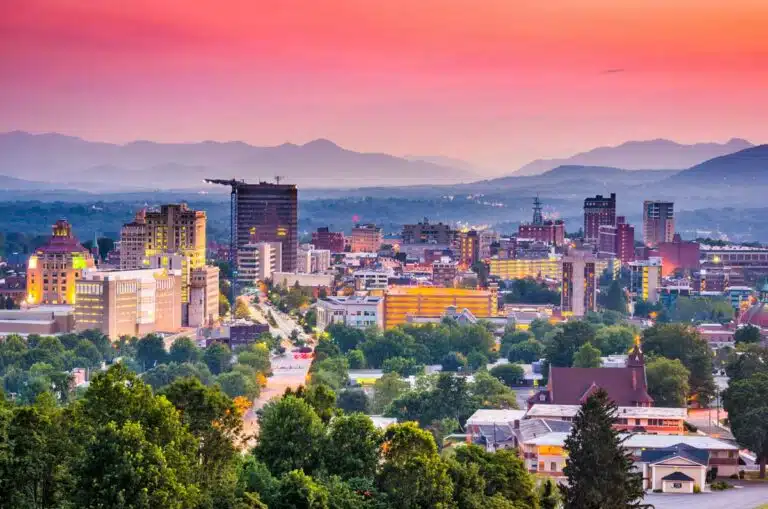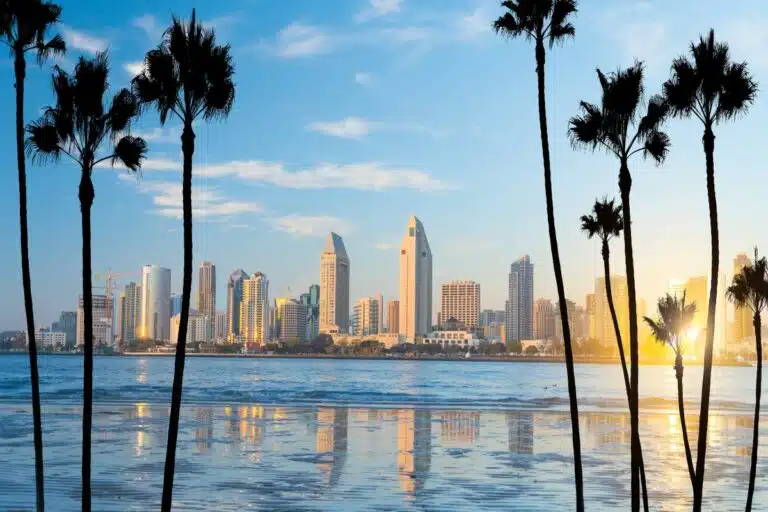Looking to explore Colorado’s national parks? The state is home to four epic national parks, each brimming with the promise of a distinctly different adventure. Here’s what you need to know.
Colorado’s anthem isn’t ‘Rocky Mountain High’ for nothing – after all it boasts 58 peaks that clock in at over 14,000 feet. It is, to be quite frank, an outdoor lover’s paradise.
Of course there’s the great Rocky Mountain National Park, but venture beyond the state’s most famous attraction and you’ll find three other national parks that showcase the state’s spectacular wilderness at its very best.
Like many others, I made a beeline for the Rockies during my first Colorado trip – and I have no shame about it either. It was only on subsequent adventures that I took the time to clock into the state’s other national parks: Mesa Verde, Great Sand Dunes and Black Canyon of the Gunnison National Park – but boy, am I glad that I did.
Whether it was scaling the tallest dunes in North America or seeing ancient Puebloan cliff dwellings, together the four parks offer a snapshot of beautiful landscapes, culture and adventure that is an apt representation of Colorado itself.
This guide will delve into each of Colorado’s national parks – along with top sights and things to know before visiting each of them. Let’s hit the road for your next adventure!
Colorado’s National Parks
Rocky Mountain National Park
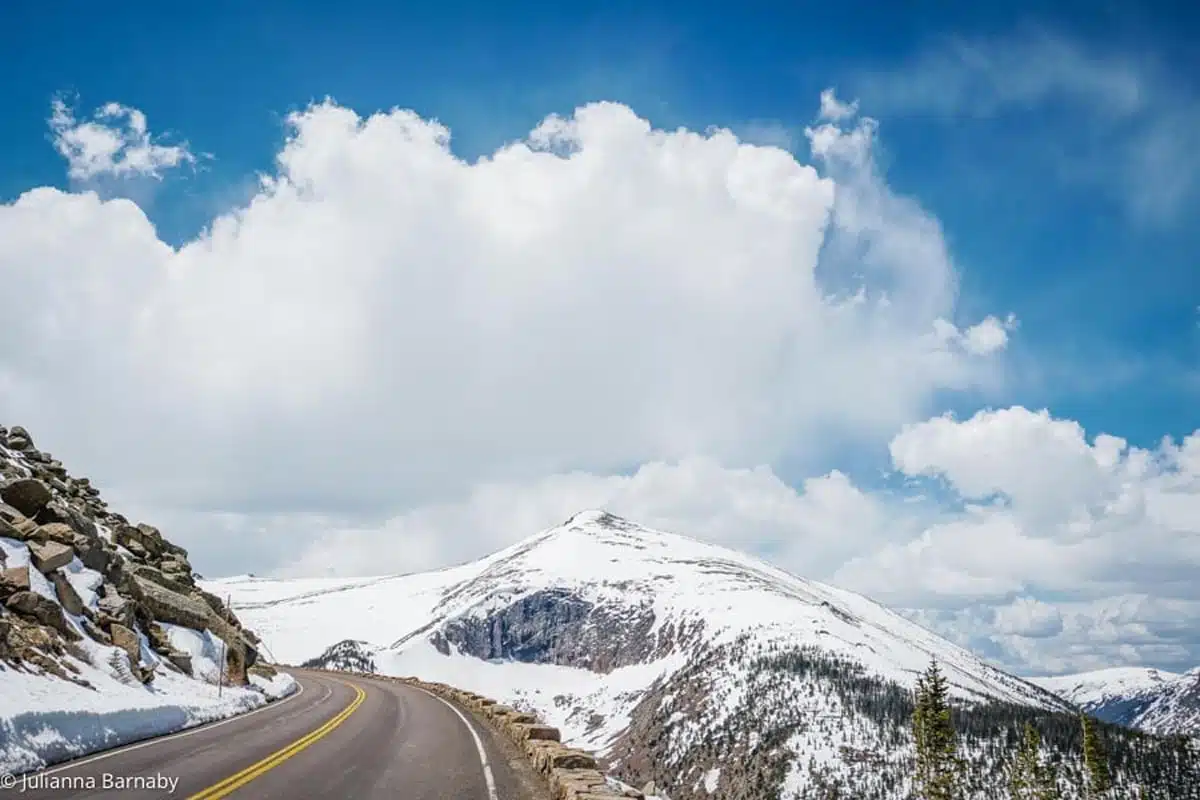
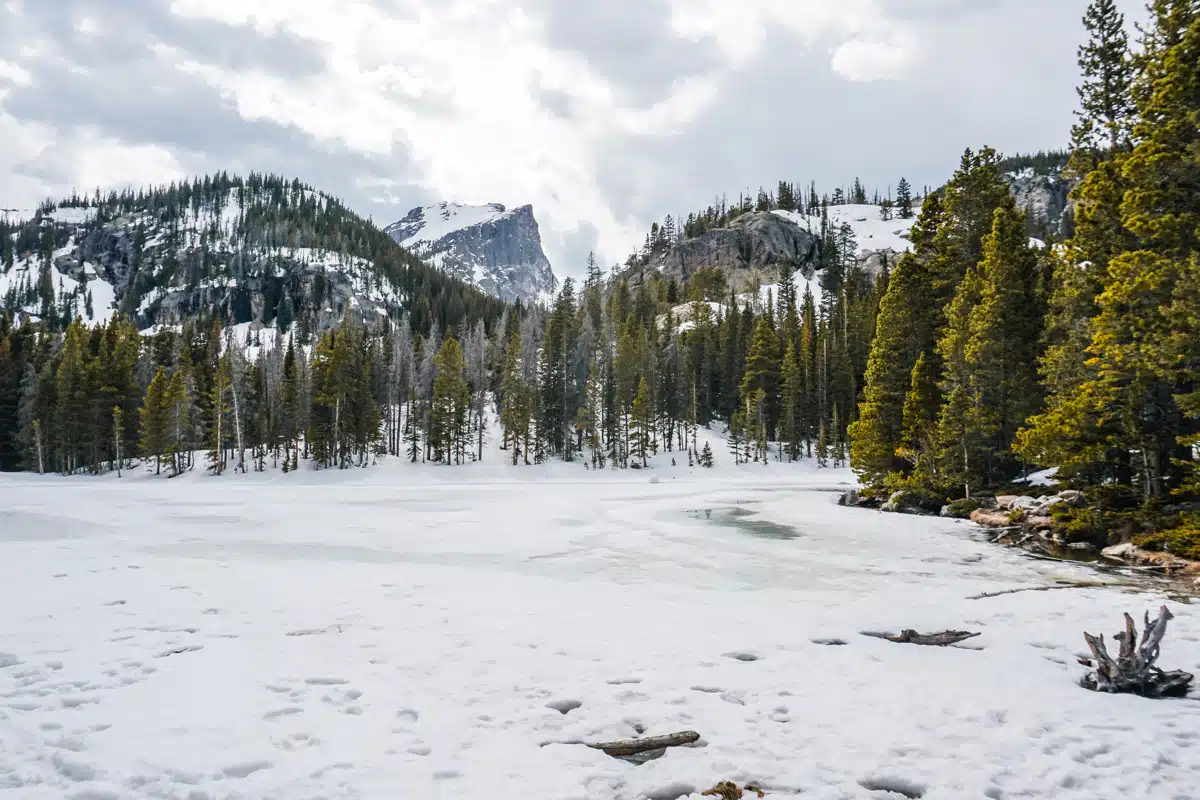
Why Visit? Some of the most epic mountain vistas in the US
Top Sights: Trail Ridge Road is the highest paved road in any national park in the US and comes with breathtaking views. Emerald Lake is a stunning lake that’s reached by a moderately easy hike. Go for Longs Peak if you want a real challenge with unmatched views.
What You Need to Know: The park’s high elevation can cause altitude sickness so stay hydrated and ascend gradually. It can get crowded so consider visiting during off-peak times or arrive at popular spots early.
There’s no better place to start than with Colorado’s most famous natural territory, Rocky Mountain National Park.
Rocky Mountain National Park is definitely ‘up there’ when it comes to spectacular scenery and some of the best hikes in Colorado. No but really, this park offers hundreds of hiking trails that together cover over 600 square kilometres!
The best part is that Rocky Mountain National Park is open 365 days of the year – so, even if you’ve explored all of the park’s hiking trails (which is highly unlikely) you probably haven’t seen them when the seasons change.
Along with its impressive peaks, Rocky Mountain National Park holds some beautiful lakes too. The serenity of Emerald Lake and Dream Lake is well worth the – sometimes slightly tricky – hike it takes to get to them.
Drive along Trail Ridge Road, which opens in late May every year to go to the high-altitude Alpine Visitor Centre which is the highest of its kind in the US.
Top Tip
Although the park is open throughout the year, certain areas and trails are sometimes closed due to heavy snow or flooding. Check the NPS website before you go. Visit the park from May to October for the best conditions and access to most of the park.
Great Sand Dunes National Park and Preserve
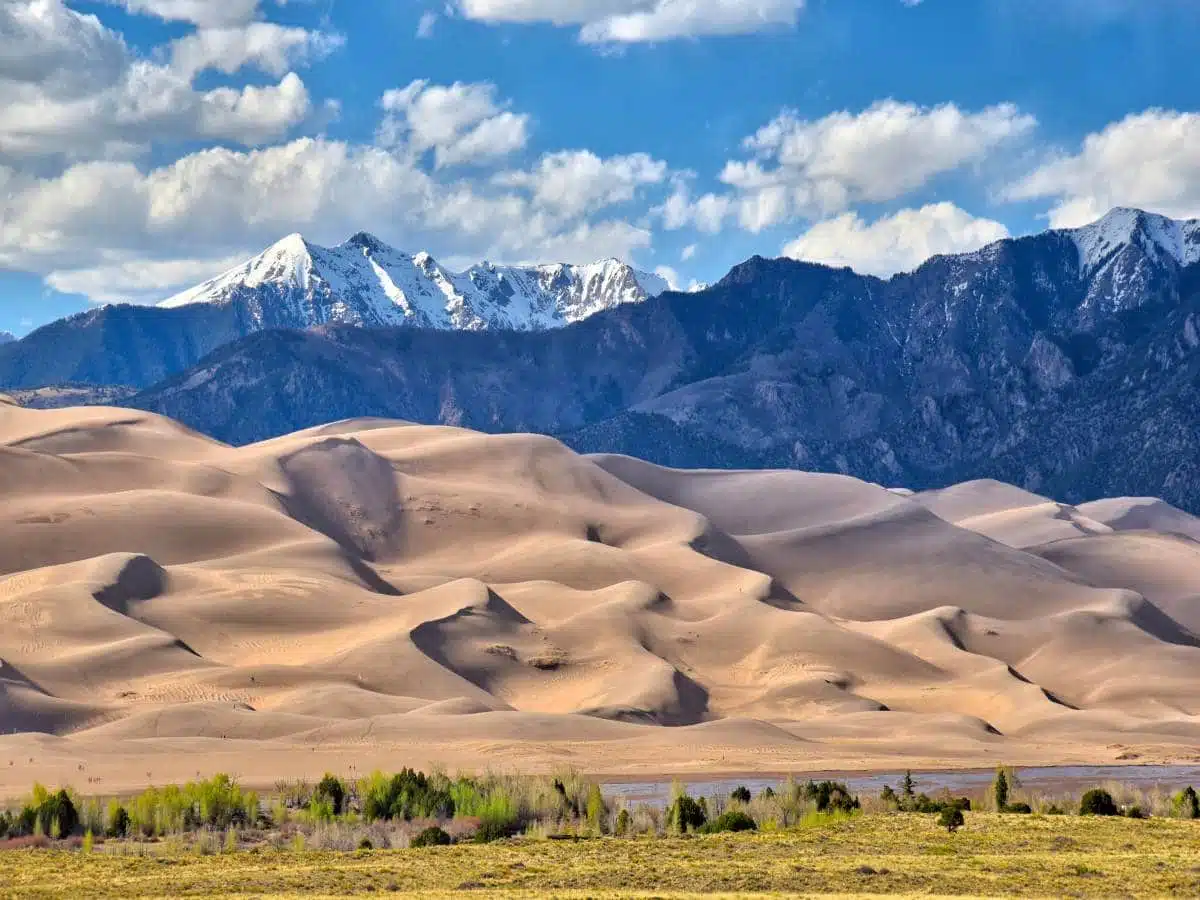
Why Visit? To see gigantic sand dunes framed by jagged peaks
Top Sights: High Dune is a popular hike that offers views of the whole dune field. Star Dune is the highest dune in the park – reach it via a (very) challenging hike.
What You Need to Know: The sand can get scorchingly hot during the day in the summer months, so plan your hikes for early morning or early evening. Bring sunglasses and a bandana or buff to deal with any unexpected sandstorms.
Great Sand Dunes National Park and Preserve is the perfect example of Colorado’s diverse natural landscapes. It might throw you off a little to see dunes bordered by lush greenery and snow-capped mountains but that’s precisely why you shouldn’t miss visiting this national park.
The 228-metre-high dunes – yes, that’s about 69 stories high – are the tallest in the United States.
So what’s the story behind the park? The park forms part of the Sangre de Cristo Range – and is located in the San Luis Valley – a valley that used to be filled with ancient lakes. As the lakes dried up, they left behind a vast field of sand that then spent 440,000 years being sculpted into the dunes you see today.
Cool right? Wait until you start trying your hand at some of the many adventures at your fingertips. If you haven’t tried sandboarding, it’s a new level of thrill. Rent specific sandboards from local shops to make the most of the sandy slopes.
If “sand sports” aren’t your cup of tea, the national park’s Medano Pass also offers a 4×4 off-road driving trail that’ll take you from the park to the neighbouring town of Gardner.
Time your visit for spring or early summer for the best weather – it’s also the time when you have a chance to visit the ephemeral Medano Creek, when the area at the base of the dunes turns into one of the country’s most unlikely beachside escapes.
Top Tip
The dunes get really hot in warmer months. So don’t forget sunscreen and wear closed shoes to avoid burnt toes. Ouch.
Black Canyon of The Gunnison National Park
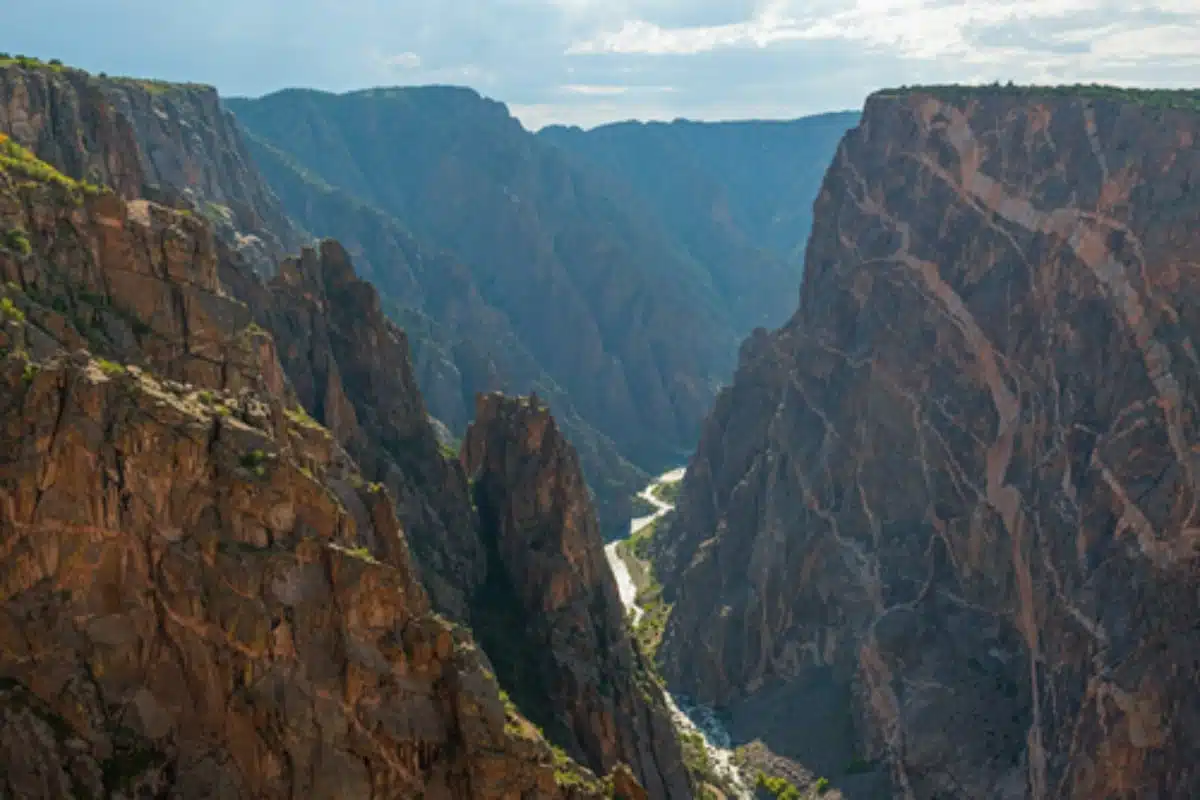
Why Visit? Jaw-dropping canyon views that rival the Grand Canyon, but with a fraction of the crowds.
Top Sights: Painted Wall is the tallest sheer cliff in Colorado and, as the name suggests, is decked out in a kaleidoscope of colours. Gunnison Point offers some of the best views of the canyon. Head out on South Rim Drive for lots of dramatic views.
What You Need to Know: The South Rim is more accessible and developed, but if you want a more remote experience, head to the North Rim. Many of the overlooks have sheer drop offs – exercise caution. There have also been a few instances of bears swiping hikers’ snacks, so be bear aware.
Black Canyon’s name is no mystery: the sheer gorge walls of dark stone drop almost 825 metres (2706ft) to the Canyon’s floor. This dramatic landscape attracts more than 430 000 visitors a year – it’s not hard to see why.
Eroded by the Gunnison River over millions of years, the Black Canyon’s walls tell the stories of prehistoric life through layers of rock and sediment. In fact, it boasts some of the steepest cliffs and oldest rocks in North America.
The national park is also home to numerous indigenous flora and fauna, moose, elks and even mountain lions.
So, what should you do when you get to Black Canyon? The Canyon’s Rim Rock Nature Trail on the South Rim is a moderate 2-mile trek that skirts along the canyon’s edge and comes with epic views of the canyon and the river below.
On the North Rim, the North Vista Trail is a moderate to strenuous (depending on where you finish it) trail of either 3 or 7 miles with some of the most scenic views in the whole of the park.
Trails that dip below the plateau are more tricky and may require some mountaineering experience, while unmarked paths along the inner canyon are unfortunately (but reasonably) reserved for experts.
Otherwise, if you don’t have extra days on hand, pack some lunch and have a picnic while you admire the Colorado wilderness.
Summer is the best time to visit this beautiful park. You’ll see many more of the region’s creatures and critters when the sun is out. Don’t worry, they usually aren’t dangerous.
Stay
If you’ve got the time, consider camping out at Black Canyon of The Gunnison National Park. There are two campsites that all offer different views of beautiful natural features around the park. You’ll need to make a reservation in advance and check the weather while you’re at it.
Mesa Verde National Park
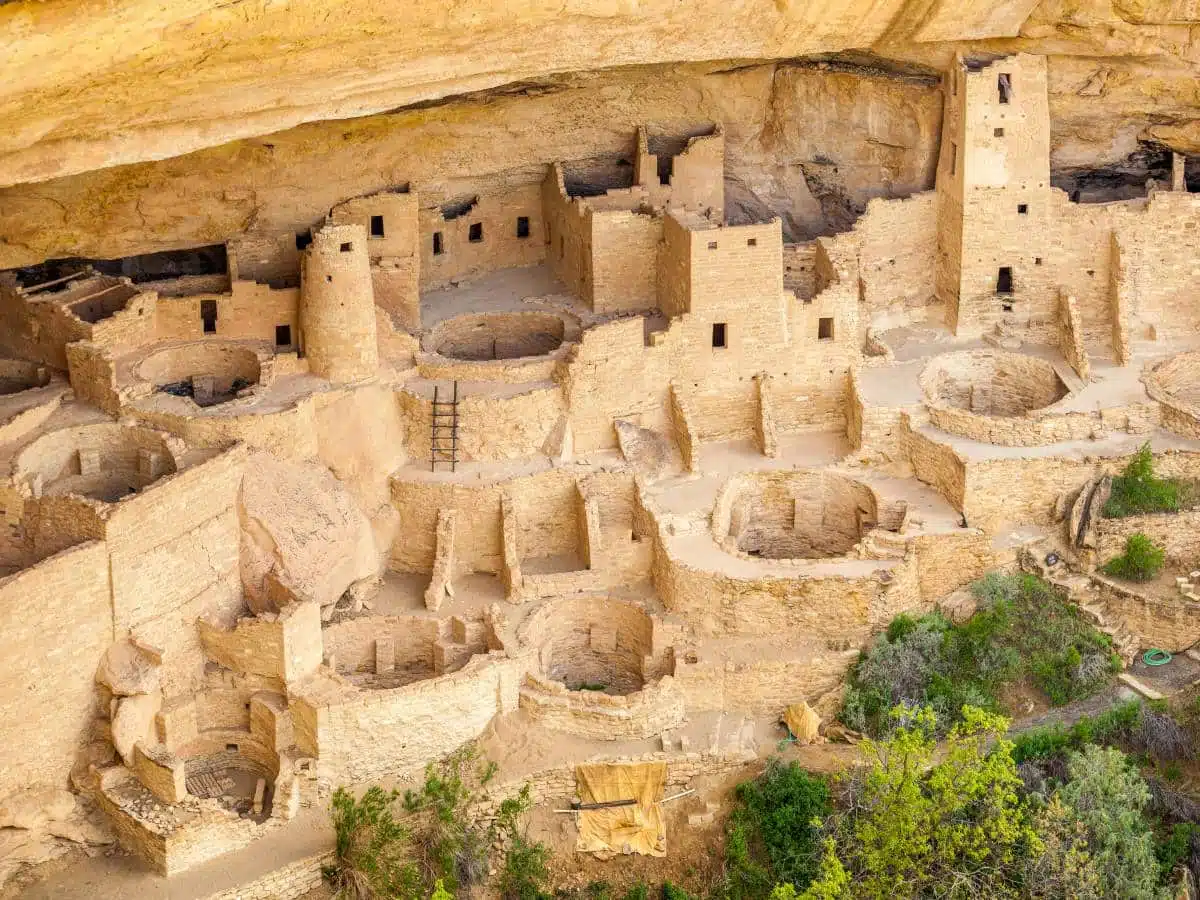
Why Visit? Get a unique glimpse into ancient Puebloan cliff dwellings.
Top Sights: Cliff Palace is the largest cliff dwelling in North America and a fascinating place to visit. You’ll need to climb ladders and crawl through tunnels to get to Balcony House but it’s an unforgettable experience. Mesa Top Loop Road provides views of a number of archaeological sites.
What You Need to Know: There’s a lot of climbing involved in visiting some locations like Balcony House. Some sites are only accessible on a ranger-led tour and there are limited services out of hours.
Where the other three of Colorado’s National Parks are about stunning landscapes, Mesa Verde National Park is a little different.
This UNESCO World Heritage Site is located within Colorado’s Montezuma County and is renowned for its ancestral Puebloan cliffside dwellings. In fact, Mesa Verde’s display of ancient cliff dwellings is the United States’ biggest archaeological preserve.
Guided tours are a must for many of the park’s most important sites – including Cliff Palace, Balcony House and Long House – and you’ll need to book ahead during peak months.
Is it worth the effort? Absolutely yes – with over 600 cliff dwellings, the park is a centrepiece of the Ancestral Puebloan heritage – there’s no better place to see and learn about this ancient culture.
Besides the historical heritage sites, Mesa Verde National Park has a lovely selection of routes for visitors to hike. Whatever your fitness level, this national park’s trails are suitable for everyone and sometimes pets, too.
Trails range from easy (like the Soda Canyon Overlook Trail) to difficult (like Petroglyph Point Trail), so don’t panic if you’re a newbie looking to get your feet accustomed to hiking.
If you’ve got an extra day or two, the park’s campsite is a fantastic spot to relax and engage in some late-night star gazing. The region’s climate, small population and altitude all make for excellent starry sky views.
Top Tip
It’s illegal to hike off-trail in Mesa Verde so ensure you’re sticking to the trail and leave no trace during your time in the park.
What You Need to Know Before You Go
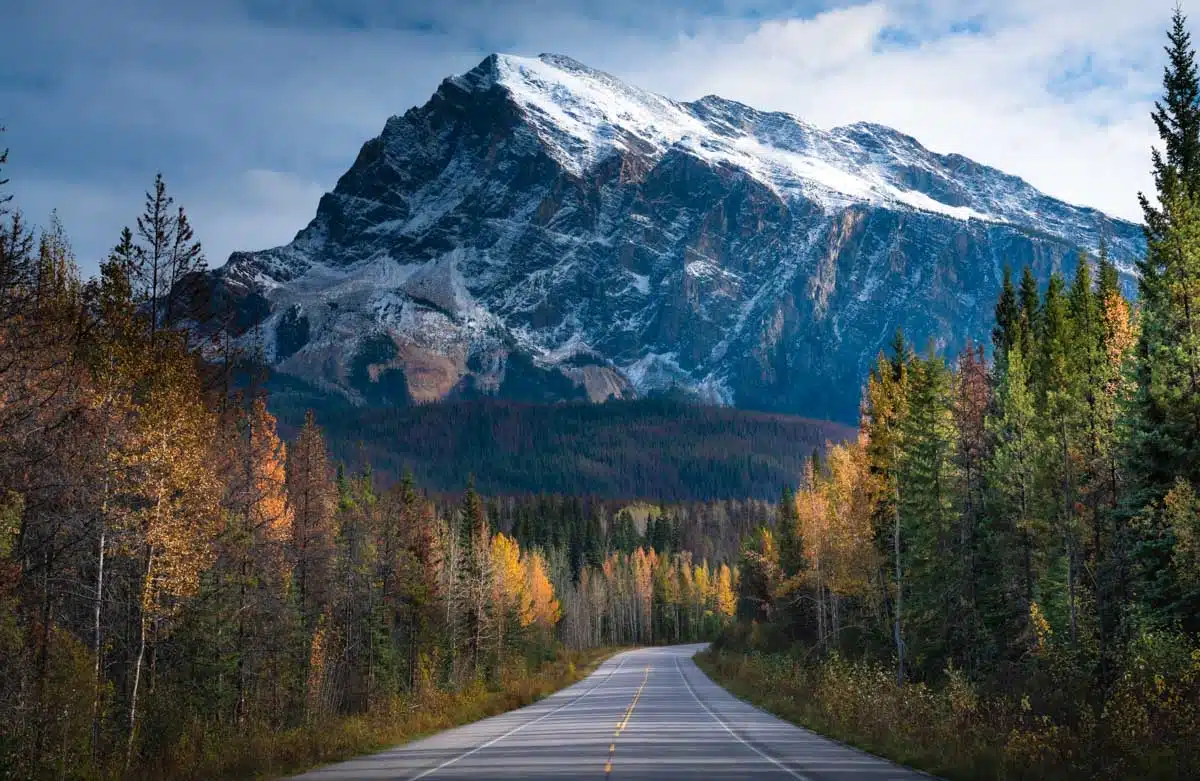
How Many National Parks Are There in Colorado?
Four. These are Rocky Mountain National Park, Great Sand Dunes National Park and Preserve, Black Canyon of The Gunnison National Park and Mesa Verde National Park.
How to Access the Parks: Passes and Permits
Like most of the USA’s national and state parks, all of Colorado’s national parks have entrance fees. You’ll need to purchase an entrance pass if you visit in a vehicle – these usually permit access for a certain number of occupants on board.
Each park offers a variety of passes. You’ll need to choose your pass according to how many days you want to spend at the park, your method of transport and how many people you’re with.
To enter Rocky Mountain National Park, you must first make a ‘timed entry’ reservation. The passes are available at the parks’ entrance stations or online here.
Top Tip
Each year I buy an “America the Beautiful” National Parks Pass for unlimited access to all national parks operated by the NPS. It pays for itself in the course of two-three trips.
How Many Days Do You Need to Explore the National Parks?
If you’re planning to visit all four of Colorado’s national parks, you’ll need at least eight days, although with two weeks or more, you can delve into the parks’ lesser-known sights.
When Is the Best Time to Visit National Parks in Colorado?
If you’re more of a tree-hugger than a people-hugger and prefer to visit during the quieter months, April to May is the best time to visit.
Alternatively, October to December is ideal for a winter wonderland experience and fewer visitors — if you don’t mind chillier temperatures and can bear limited access to the parks.
Overall, visiting from late May till mid-October offers the best weather conditions and more chances of spotting wildlife.
What to Pack
- Your park passes (if you’ve bought them ahead of time)
- Sturdy hiking boots
- A rain jacket
- Sunscreen and a hat
- Snacks or a picnic lunch
- Your camera
- Plenty of water
- Bug repellant spray
Colorado National Parks: Map
Read More Colorado Guides
- Epic Hikes in Colorado For All Types of Adventurer
- Brilliant Things to Do in Rocky Mountain National Park
- The Best Hikes in The Rockies
- Unmissable Things to Do in Denver
- Take an Epic Colorado Road Trip with this Itinerary
Love This? Save and Share on Pinterest
